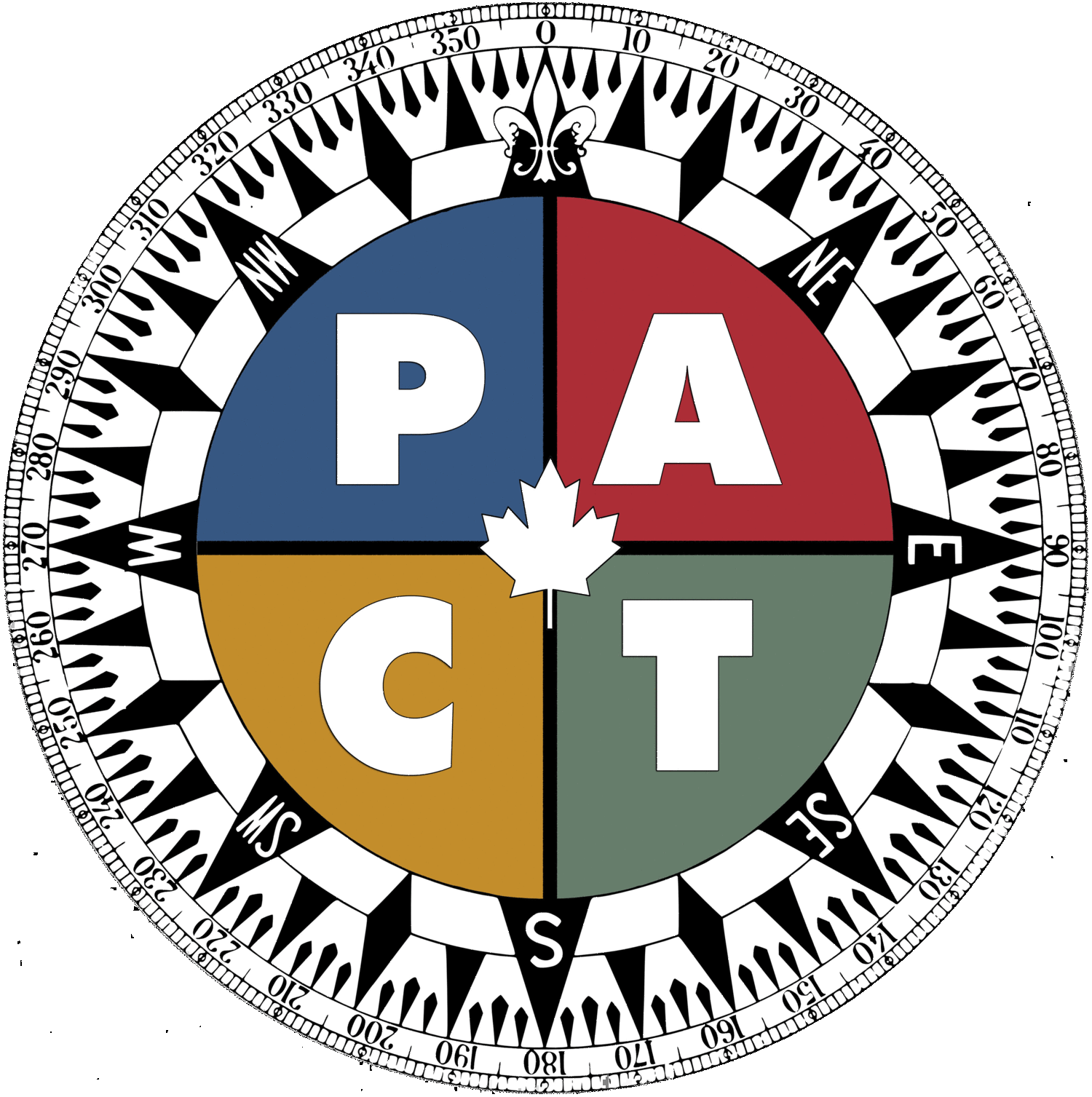PACT PORTAGING- The Grand Portage
The Grand Portage is a 13.6km trail through the woods that bypasses the last 33.6km of the Pigeon River. It winds through swift rapids and turbulent falls lined with steep slippery basalt cliffs. Not an ideal situation for paddlers. To bypass these dangers the North-West Company used the Grand Portage. A trail through the woods that allowed safe and speedy passage of its people and goods. The Grand Portage acted as a halfway mark for the NWCo, separating the large lake country to the east from the rivers and smaller lakes to the west. Supplies and trade goods were brought from Montreal on 36' canot du maitre's, while canot du nord's would bring furs from the remotest stretches of the Canadian wilderness. Here is where the company's employees would gather once a year for a great Rendezvous. Two weeks of business and pleasure, celebrating the company's successes and planning for its future.
For us, Grand Portage represented a huge milestone - our longest portage of the trip, and a spiritual halfway point. Leaving the wild west behind for the more familiar east.
We arrived at the north end of the National Park at the site of Fort Charlotte. After rescuing our canoe, (see "Our Canoe Runneth Over") we sat down and made a plan. What was the most efficient way to carry our 300 lb. North canoe and plus our gear 13.6km? Our strategy involved complicated mathematics and a giant game of leapfrog. We calculated that it took three times longer to move the canoe than the same distance covered with just packs. So we would move the canoe for three hours down the trail, and then doubleback to the packs in under an hour and bring the packs to the boat in just over an hour. There's five hours gone! We decided to move the canoe for as long as we had light the first night, which ended up being three hours - about 6km covered. We had a feast (less carrying weight) and slept that night at the Fort Charlotte campsite, back at the west end of the portage.
The next morning it was haul the bags to the canoe, move the canoe, double back for packs etc. We took our lunch just over the halfway mark of the trail. Then, excited about finishing, we decided to abandon our leapfrog mission and push the canoe all the way through to the end.
And push we did. After a week of the hardest portaging and tripping leading up the Grand, we were exhausted. Though the trail was cut recently, and to voyageur canoe width, the sheer length of it was enough to call all previous body harm to return. Imagine holding a bathtub on your shoulder for hours through the woods, over duckwalks, creek bridges and beaver ponds. The weight pushing you down into the mud, causing your side and back to scream in rebellion. Your mind is not sure whether to both laugh at the ridiculous of the situation and to curse at its injustice.
When the walls of the Grand Portage fort came into view we started excitedly shouting in our limited French vocabulary. Then through the trees we got our first glimpse of Lake Superior. A blessed open body of water promising no portaging for weeks. A sweeter reward we could not think of.
It was six thirty by the time the canoe was resting on the shore of Gitchigumi, the Great Water.
We met Margaret, historical gardener of the Grand Portage National Monument who pulled some strings and got us permission to camp in the voyageur's encampment display outside the fort's walls. How fitting! Now we could rest our weary bodies in true historical style! Tomorrow we would probe to be a living display of the voyageur to the tourist who were curious about our journey.
Feeling we had just finished one of the most demanding tasks on our trip. We sat down on the grass.
Then we looked at a watch. Seven-thirty.
Then we started the 12km there and back again for our packs.
All said and done we'd hiked 40.8km. Our total time portaging was approximately 14 hours and 20 minutes for all six voyageurs to cross the finish line.
Highly recommended for anyone wishing for a little exercise.

